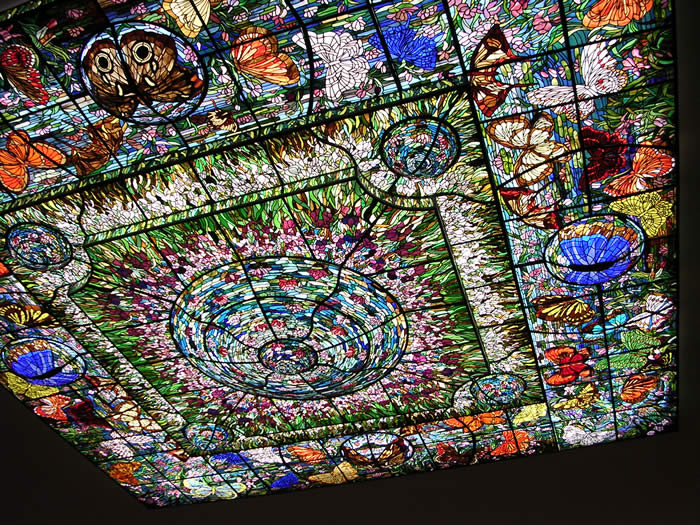Producers’ Dreams
The music drama From The Realm Of The Shadow has fired the imaginations of several major directors and producers around the world even before its release on Naxos Records. Before the 2013 production with Jeremy Williams and Convergences Theatre Collective, several artists have made efforts to get this mammoth undertaking staged as a movie, an opera, or a ballet. Other artists will no doubt emerge now that the work is getting international exposure. So far, four directors have been actively interested in producing Shadow. Micha Hendel was a director at the Washington National Opera and has been promoting the idea of staging Shadow with major opera companies worldwide since 1998. David Taylor is the founder and principal choreographer of the David Taylor Dance Theatre, Colorado’s premiere contemporary dance company. Emmerich Oross is a Hungarian film director who has developed an extensive proposal for making Shadow a feature-length film. More information on all three of them appear below.
As more creative directors take an interest in producing Shadow, their proposals will appear in this section as well. If anyone reading their material is interested in developing grants or investing in any of these projects, the directors themselves can be reached directly at the website and e-mail addresses at the end of each of their sections.
Dance: January 16, 2001
I first had the privilege of hearing Chris Mohr’s composition From The Realm Of The Shadow in a sound studio in 1998. I was struck by the power of the work. The battles between the light and dark forces inherent in the spirit world are approached in an appealing, unique and unusual way. Because of the rhythmic force and power of the music, the work lends itself to a comparably powerful dance, music and multi-media production. As a choreographer I have always been attracted to music and subject matter fo this kind. Because of the powerful nature of the composition, I’m hoping that some time in the future the opportunity will present itself for my talents to combine with those of the composer to create something very special in the performing arts. Choreographing this work, or part of this work, would be a very exciting project. I am more than happy to lend my full support, artistically and otherwise, to From The Realm Of The Shadow.
— David Taylor, Artistic director of the David Taylor Dance Theater, Colorado
[/three_fourth_last]
Opera: August 1, 2000
Chris Mohr’s life-long confrontation with his own ‘shadow’ has taken the form of a grand multi-media event. For all its new-age and psychological content, both dramatically and musically, it falls into the category of the classical Rite of Passage. As in mythology, the hero’s journey represents the experience of society, while the soul struggles to accept the brutal nature of the human experience. In this case the hero is on a journey of self-exploration following a traumatic gang-rape. Thus, From The Realm of The Shadow is a timeless ritual seen from a contemporary perspective. It is rare nowadays to encounter a new drama that dares to deal with taboo issues. I am amazed by the amount of courage displayed in its creation.
As a director I am fascinated by the abstract ‘shadowscape’ Chris Mohr has depicted. His music rises beyond the forms and styles he employs and strikes true originality. It takes the listener on a journey from the most primitive to the sublime. The lack of words, but the unfolding of riveting drama challenges the listener’s imagination to envision his own fantasy ‘staging.’ My own preoccupation with the emotional effects of light, shadow, color, movement and sound responds to Chris’s magical hints on an instinctive level using stage technology that points towards the future.
Micha Hendel, Assistant Director, Washington National Opera
If you are interested in offering support for Micha Hendel’s proposal to stage From The Realm of The Shadow on an opera stage, contact Mr. Hendel at Michahendel@hotmail.com
2001 Feature Film Ideas
 by Emmerich Oross and Christopher Mohr
by Emmerich Oross and Christopher Mohr
Hollywood has become a victim of its own greed, says Ismail Merchant, who produced the Academy Award-nominated Howard’s End. Merchant complained that Hollywood focuses too much on violence and sex because of concerns over profits. “If we make a film for $2 million, it doesn’t have to make $100 million. If it makes $4 million or $2.5 million or $2 million, I’m happy,” Merchant said at a recent screening. The Denver Post – March 2001.
Introduction
Raising money for a feature film version of From The Realm Of The Shadow has been a lifelong dream of its composer. Hungarian film director Emmerich Oross has had a lifelong dream of a feature-length film where not a single word is uttered or sung. Together they hope to see such a project come to fruition. A formal Private Placement Memorandum has been developed, with details about a budget, etc., and the possibility of selling shares to investors. Another possibility, not fully explored here, is receiving grants and donations to bring this project to light. Below are excerpts from the Private Placement Memorandum.
For more information contact the composer at chrismohr@msn.com
About the Investment
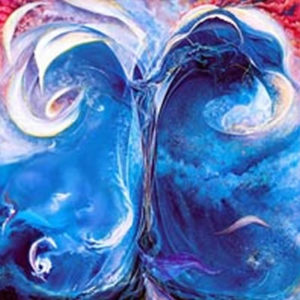 Feature films are widely held to be a high-risk investment, and it is common knowledge in the film industry that nine of ten of the feature films produced by major studios lose money. How, then, can a small, independent production company expect to compete with the likes of Universal and Paramount Studios’
Feature films are widely held to be a high-risk investment, and it is common knowledge in the film industry that nine of ten of the feature films produced by major studios lose money. How, then, can a small, independent production company expect to compete with the likes of Universal and Paramount Studios’
With the production and distribution of From The Realm Of The Shadow, Classical Guide Inc. will employ several methods to ensure the film’s profitability. Most importantly, we will contain the production budget at $1,712,000, primarily using talent from Riga, Latvia, and shooting most scenes in Colorado, Utah and Central America, where location expenses will be minimized. This proposed budget is enough to guarantee the quality of the film and to fully capitalize efforts to market it. At the same time, it represents a mere 6% of the typical feature film production budget for a major studio, which in 1992 averaged $29 million (Variety, 3/13/93). Herein lies the key to profitability: high quality, low budget films can definitely make money, though they may not be the blockbusters the studios need to subsidize enormous losses. Movies such as The Graduate, Easy Rider and Friday the 13th have all successfully employed this concept, earning up to 100 times their production budgets from theater rentals alone (Russo, 1989).
The only remaining issue, given a low budget, will be the quality of the film–which in this case is largely a function of the quality of the script and music and the expertise of the director. These are three aspects of the proposed project which we find especially promising. The music and dramatic outline for From The Realm Of The Shadow have been created by Christopher Mohr, a former editor at a major theater publishing house, publisher of a major classical music magazine, and author of two highly successful musicals. He has conducted excerpts from Shadow with several orchestras including the Colorado Symphony, and has already recorded the entire work with the internationally acclaimed and extensively recorded National Symphony Orchestra and National Choir of Ukraine. Naxos Records has released the entire recording on two CDs (Naxos American Classics 8.559089-90). Director Emmerich Oross has produced and/or directed dozens of feature and documentary films in Hungary and Hollywood. Listed in the International Guide to Film Directors, he was dubbed a true “Soldier of the Cinema” by the Rocky Mountain News in November 1992. Further, adequate funds have been budgeted to secure the services of a talented cinematographer and film editor.
We are seeking to raise $1.712 million in capital. We intend to complete the film within twelve months of the receipt of start-up funds; to complete distribution agreements within 18 to 24 months of the receipt of funds, and to fully reimburse investors within 36 months of the receipt of funds. Thereafter, Classical Guide Inc. and investors shall share the net profits from the film and related products, including a documentary of “The Making of Shadow”.
Up to 49% of the interest in the film and related products will be sold under the auspices of this $1.712 million solicitation, so that each percentage point of ownership is ascribed at a value of $35,150. Initially, 100% of net revenues from the film and related products will be used to reimburse investors for their capital expenditures. Once this has been accomplished, profits will be split as follows: 49% to investors and 51% to Classical Guide Inc. and its contractors. Estimates of projected return on investment during to 48 months from project start-up are anywhere from $750,000 to $3.49 million, depending on the success of the film in domestic and foreign markets. Additional returns could be realized from the documentary; however, any estimates were deemed too speculative to include in our projections). These figures represent rates of return from 58% at the low end to 203% at the top of the scale. A fully realistic goal is to generate $800,000 in net revenue to investors, after repayment of capital, or a 46.5% return on investment in 42 to 48 months from the film alone. Break-even is estimated at $7,735,000 in domestic box office gross.
While these rates may seem modest for a high risk investment, we contend that our strategy of containing costs and aggressively pursuing various markets has greatly lessened the degree of risk traditionally associated with filmmaking, so that investors appear unlikely to suffer any losses. Further, given the success of the film in theatrical markets, additional profits should be realized from the soundtrack, documentary and video markets.
Objectives
The primary objectives of the proposed film project are:
To produce a feature film of exceptional quality titled From The Realm Of The Shadow, by Christopher Mohr, within six to twelve months of the receipt of $1.712 million in production funds.
To produce and market a one-hour, broadcast-quality documentary video tape on the making of Shadow.
To show the completed film, minimally, at New York, Sundance, Telluride, Toronto, San Francisco, Chicago, Venice and Berlin Film Festivals.
To obtain the best possible worldwide film, television, video, and sound recording distribution agreements in terms of advertising, promotion and market saturation–for the film and associated documentary and soundtrack–within 18 to 24 months from the receipt of funds.
To achieve break-even (defined as payment of all production and distribution expenses and repayment of capital to investors) within 30 to 36 months of the receipt of funds.
To generate a minimum of $15.0 million in gross box office receipts from the film alone, and $800,000 in net revenues (after repayment of capital) in the 42 to 48 months after the receipt of funds.
To share in profits from the sale and distribution of the film and documentary as follows: 51% of net profits to Classical Guide Inc. and its independent contractors and 49% of the net profits to investors in the film and documentary.
Plot Description
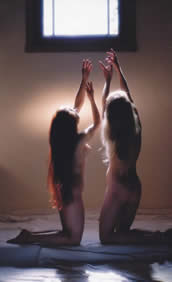 From The Realm Of The Shadow is a two-hour-and-ten-minute long film based on the music drama of the same title by Christopher Mohr. When the composer was nineteen years old, he was invited to join six other men in a gang-rape. Unable to directly resist them, he blurted out, “Hold on, you guys. Before we do this, she needs a drink of water first.” Amazingly, the other men allowed him to walk her out of the room to the safety of the drinking fountain down the hall. As the composer recalls, “Afterwards, I was very confused. I had done the right thing, but it took a supreme effort of will not to join in. I confronted for the first time my own `shadow.’ Then I had recurring dreams of violent tribal rituals, all fully staged, orchestrated and sung. I swore that if I were to go ahead with composing such an opera, I would find out the truth about what I had experienced–or I would give up and throw the entire project away. That was the beginning of a long journey of inner exploration.”
From The Realm Of The Shadow is a two-hour-and-ten-minute long film based on the music drama of the same title by Christopher Mohr. When the composer was nineteen years old, he was invited to join six other men in a gang-rape. Unable to directly resist them, he blurted out, “Hold on, you guys. Before we do this, she needs a drink of water first.” Amazingly, the other men allowed him to walk her out of the room to the safety of the drinking fountain down the hall. As the composer recalls, “Afterwards, I was very confused. I had done the right thing, but it took a supreme effort of will not to join in. I confronted for the first time my own `shadow.’ Then I had recurring dreams of violent tribal rituals, all fully staged, orchestrated and sung. I swore that if I were to go ahead with composing such an opera, I would find out the truth about what I had experienced–or I would give up and throw the entire project away. That was the beginning of a long journey of inner exploration.”
From The Realm Of The Shadow has a rape scene in it, but it is not “about” rape and its aftermath. It is about the truth of who we are, which can reveal itself even in our darkest despair, our bitterest cynicism, our deepest wounds. It is the unfolding journey of healing and the discovery of that peace which lies at the heart of even the most reprehensible acts.
The are many characters in From The Realm Of The Shadow, but a single consciousness pervades all of them. The shadowscape is populated with many warring factions, but all of them are partial, and all of them eventually die into that which ius always whole. Where is The Realm Of The Shadow’ It is the hiding place of any experience we reject, any part of ourselves we are afraid to look at. What a glorious surprise to discover that in The Realm Of The Shadow we hide not only our darkest impulses but a Love which surpasses all understanding.
From The Realm Of The Shadow has profound philosophical and metaphysical underpinnings, but its message is communicated in the simple language of pure emotion. None of the characters speaks a single word; all sing in “vocalise” style, conveying their story through facial expressions and movement. The scenes, set in the vast open spaces of mountains, deserts and perhaps the ruins of an ancient jungle civilization, will be a blend of the natural and the surrealistic, but always visually gripping.
The story line is very simple. The movie opens in almost total darkness and quiet, amid a sea of stars. A single star descends from the firmament, breaking into seven rays of light, bringing to life two choruses of dancers. At first they dance in perfect harmony together, but then one chorus, afraid of the intensity of the others’ dancing, pushes their partners into the shadows. Then, the first chorus sings of their sense of isolation. A rigid Patriarch emerges, forcing them into lock-step dance movements. Outraged, the second chorus bursts from the shadows, attacking the members of the first chorus. An especially violent male dancer, Jabez, emerges from this chorus, and leads the others in a gang rape of one of the first chorus members, Camilla.
Alone onstage, Camilla is in shock. Her friends regroup and return to her, but instead of offering her help or compassion, they angrily reject her. Only her best friend Angela remains with her. In the comforting arms of her friend, Camilla screams in anguish. Looking down at her belly, she feels the stirring of life.
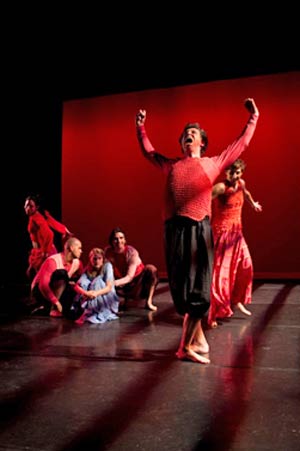 The camera fades into the womb, where three radiantly smiling angels (all young, and floating through clouds on ice skates) dance around an attractive red light. One of the three is particularly drawn to this energy, and begins to incarnate inside Camilla’s womb. We see him growing to full term as the visuals alternate between literal pictures of fetuses and symbolic imagery of the Eden-like womb environment.
The camera fades into the womb, where three radiantly smiling angels (all young, and floating through clouds on ice skates) dance around an attractive red light. One of the three is particularly drawn to this energy, and begins to incarnate inside Camilla’s womb. We see him growing to full term as the visuals alternate between literal pictures of fetuses and symbolic imagery of the Eden-like womb environment.
Finally, it’s time for Matthew to be born. His loving angelic friends wave goodbye and fade away. What begins as ecstatic contractions amid images of rushing water and traveling down magnificent desert canyons soon becomes a battle with his mother Camilla. She does not want this child, and is fighting the contractions of labor with all her might. The imagery becomes nightmarish, even hellish, as memories of the rape haunt Camilla and the violent chorus members descend on Matthew dressed as demons. Camilla and Matthew nearly die during the birth, but at last Matthew emerges, screaming his lungs out. Camilla turns her head away as Angels lifts the newborn into the polluted air.
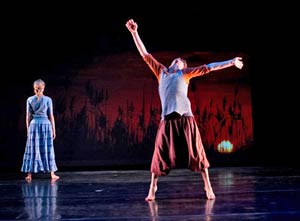 In the second act, Matthew is a thirteen year old boy. In his sleep, the angelic beings return to him, skating and dancing around him, showering him with love and blessings. He wakes up and tries to play with his miserably depressed mother, who eventually slaps him and sends him away. Matthew can’t understand why his mother always rejects him. Alone with her thoughts, Camilla feels a deep sadness at her inability to love her son. Her friend Angela returns, and in the safety of abiding friendship she is finally able to experience love. Matthew, however, feels completely abandoned by the world. He cries out in despair, and his angel friends return to him, revealing to him his mother’s unhappy history, and his own origins. He learns compassion, and in an all-embracing vision dissolves into the white light of pure divine love.
In the second act, Matthew is a thirteen year old boy. In his sleep, the angelic beings return to him, skating and dancing around him, showering him with love and blessings. He wakes up and tries to play with his miserably depressed mother, who eventually slaps him and sends him away. Matthew can’t understand why his mother always rejects him. Alone with her thoughts, Camilla feels a deep sadness at her inability to love her son. Her friend Angela returns, and in the safety of abiding friendship she is finally able to experience love. Matthew, however, feels completely abandoned by the world. He cries out in despair, and his angel friends return to him, revealing to him his mother’s unhappy history, and his own origins. He learns compassion, and in an all-embracing vision dissolves into the white light of pure divine love.
In the final act, we return to the two choruses. The repressive first chorus is now trapped by the elaborate defenses it has erected against their enemies; the Patriarch is old, weary, despairing and almost immobile. Matthew enters in answer to their plea for help, and invites his angel friends among them. They shower the Patriarch with healing. Matthew reaches out his hand; the Patriarch can walk freely again. The entire first chorus bursts into celebration at their new-found freedom, and before long they even welcome Camilla and Angela back into their company. Their activities eventually rouse their enemies–the second chorus–to life.
An aging Jabez, now elaborately costumed with a mask, feathers and totemic symbols, makes threatening gestures to Matthew, but Matthew laughingly imitates him. Jabez decides to join in the fun, and soon the second chorus leaps into several wildly celebratory dances. Matthew is beloved by both choruses now, but they still hate each other. Jealous of Matthew’s attentions to the second chorus, the Patriarch rearms the first chorus, and an all-out war erupts. As Matthew looks on from the sidelines, Jabez and the Patriarch are locked in mortal combat. The angel of death appears before Matthew, calmly singing above the fray. Matthew walks in between the two men just as both of them are lunging at each other with their spears.
As Matthew dies, his angels return one last time. But rather than carrying him to heaven, they walk into his heart and die with him. His mother Camilla holds Matthew’s dead body and sings a brief song of pure grief. One of the young women who had danced for Matthew dances wildly around the funeral pyre, alternating between burning grief, ecstasy and denial. Images of the Hindu flames of purification merge with the Christian vision of the flames of hell, as the music combines Indian raga styles with European Renaissance polyphony. When Matthew’s body is reduced to ashes, Angela steps forward, now as radiant as an angel. A solo flute intones a variation of Camilla’s song of grief, transforming it into a melody of compassion. The two choruses shared only their love of Matthew. Now, in their grief at his loss, nothing separates them. Angela begins to sing a divine lullaby and farewell, and other grieving women join in. The solo flute returns one last time, now transforming Camilla’s melody into one of purest love.
The members of the first chorus enfold the members of the second chorus in their robes. A mist rolls in, and the bodies disappear beneath it. Seven rays of light rise from the mists, merging into a single point of white light. The stars come out, and the point of light rises slowly into the firmament as the solo soprano and chorus sing an all-embracing five-octave chord. The music fades into silence.
Eternal Rest.
Notes On The Music
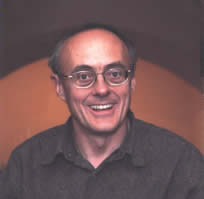 The music drama From The Realm Of The Shadow took 20 years to compose, from 1975 to 1995. The music is highly melodious, rhythmically invigorating and emotionally evocative throughout, and composed in styles inspired by traditions including Medieval, Renaissance, Baroque, Classical, Romantic, post-Romantic, early 20th century, microtonal, Middle Eastern, Eastern Indian, Balinese, folk, rock and jazz. Some of these styles appear simultaneously, in a kind of cross-cultural counterpoint.
The music drama From The Realm Of The Shadow took 20 years to compose, from 1975 to 1995. The music is highly melodious, rhythmically invigorating and emotionally evocative throughout, and composed in styles inspired by traditions including Medieval, Renaissance, Baroque, Classical, Romantic, post-Romantic, early 20th century, microtonal, Middle Eastern, Eastern Indian, Balinese, folk, rock and jazz. Some of these styles appear simultaneously, in a kind of cross-cultural counterpoint.
The music was scored for an enormous array of instruments from around the world: symphony orchestra, symphonic choir, Balinese monkey-chanters, solo singers, oud, sitar, tamboura, Tibetan bells, Haitian voodoo drums, Brazilian percussion instruments, viola da gamba, piano, celesta, classical and folk harps, Ukrainian folk instruments, pipe organ, electric and acoustic guitars, and a bank of synthesizers.
There is not a single word in this music drama; the universal language of pure emotion is sung in “vocalise” style throughout. The three choirs: rigidly classical, violently percussive, and etherically angelic, present radically different modes of singing.
Much of the original musical inspiration, especially the angelic choirs, are simply transcriptions of music first heard in the dream state. Over the years, other sections of the music were composed on Italian trains and in Paris subways, in India and Nepal, in the Florida Keys, atop cliffs and mountains in Colorado and Sedona, Arizona, while washing dishes, and even in the same Venetian cafe where Wagner composed some of Tristan und Isolde.
Most of the recording was done with the National Symphony Orchestra and Choir of Ukraine in Kiev during -30o weather from December 21-25, 1997. Conductor Theodore Kuchar has recorded dozens of CDs with this orchestra, and even won the Record of the Year Award for his recording of Lyatoshynsky symphonies with this orchestra. Ukrainians also have an abundance of classically trained folk musicians. This is where I found the sopilkas (wooden flutes), tsymbaly (hammered dulcimer), accordion and bandura (folk harp). Two members of an internationally respected jazz saxophone quartet and Ukraine’s best-known jazz singer are also to be found on this recording. The recording process was completed in America, with members of the New York Festival of Microtonal Music playing cello and bassoon, Neil Haverstick playing 34-note-to-the-octave oud (a middle Eastern guitar-like instrument), a bank of synthesizers, Indian tambouras (drone instruments), sitar, Tibetan bells, Mexican rainstick, Brazilian and Haitian percussion instruments, and more solo singers.
Many listeners have commented on the extraordinary ranges of the singers. The entire bass section of the National Choir of Ukraine routinely drops to a low C and even the B below low C, a feat unattainable by any other choir I know of. The solo sopranos regularly inhabit the realm above high C; one soprano manages to sing the B above high C, soaring above the final chord of the final act. To our knowledge, this is the highest note ever sung in any opera or oratorio, yet it is sung tastefully and is barely audible in the final mix. The extreme vocal highs and lows greatly widen the embrace of the music, and the stratospheric soprano notes almost have the effect of leaving the physical realm behind entirely. After all, Mozart’s last words were, “Silence! Silence! Now Hofer is taking her high B-flat.” Josepha Hofer, who created the role of the Queen of the Night in Mozart’s The Magic Flute only months earlier, was indeed capable of singing the B-flat above high C. The final moment of From The Realm Of The Shadow takes our soprano a half-step higher still, while the basses sing the B five octaves below her. Like Mozart, Shadow leaves this earth on a very, very high note.
Project Description
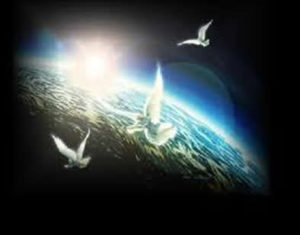 From The Realm Of The Shadow tells the story of a woman’s rape and the long journey of healing which is undergone by her and everyone around her. More broadly, it is a multitextured work with many levels of political, psychological and spiritual implications. Politically, the rape occurs in the context of a rigid, repressive patriarchy. Though the two choruses are at war with one another and exhibit drastically different behaviors, both the repressive, respectable society and the violent gang are dominated by strong men, and both are deaf to the women who are a part of the respective groups. Part of the healing process is a breakdown of the male-dominated political systems which made the rape possible in the first place.
From The Realm Of The Shadow tells the story of a woman’s rape and the long journey of healing which is undergone by her and everyone around her. More broadly, it is a multitextured work with many levels of political, psychological and spiritual implications. Politically, the rape occurs in the context of a rigid, repressive patriarchy. Though the two choruses are at war with one another and exhibit drastically different behaviors, both the repressive, respectable society and the violent gang are dominated by strong men, and both are deaf to the women who are a part of the respective groups. Part of the healing process is a breakdown of the male-dominated political systems which made the rape possible in the first place.
Psychologically, the rape can be seen as a consequence of repressed libido, a desperate attempt to make contact in a world where violence is the only way to be seen. The rape is an expression of rage as much as it is a sexual outlet. The healing begins when consciousness allows its own pain and anguish to surface. Thus, the “shadow,” that which we reject in ourselves, is allowed to be seen. As Carl Jung says, to confront one’s own shadow is to see the light. Shadow’s psychological exploration takes us to what many consider the bedrock of a host of psychological ailments: the birth trauma itself.
All of these observations and processes occur in the broadest spiritual context. In the beginning there is stillness and peace, represented by silence and a vast field of stars. This peace reveals itself between acts; it is reflected in the angelic singing which permeates much of the music; it is into this peace that everything resolves itself in the end. The polarities of desire and aversion and all the battling parts of a shattered spirit all die into this all-embracing peace. Thus, the subconscious and the conscious, the worlds of metaphor and literal reality, the shadow and the light, are all healed as they are brought into pure stillness. No single religious tradition can claim a monopoly on this peace. The Catholics begin their funeral services with the words, “Requiem Aeternam” (Eternal Rest). In the Book of Colossians it says, “Let the peace of God rule in your hearts, and be thankful.” In the Hindu tradition, the Bhagavad-G exhorts, “He whose mind is perfectly tranquil, to such a one comes supreme bliss.” The Buddhist tradition of meditation offers a path away from suffering and into nirvana. The Hebrew psalms sing, “Be still and know that I am God,” and “In peace is My dwelling place.” The great Muslim teacher yaz al-Bist wrote, “All this turmoil and noise and movement and desire is outside the veil; within the veil is silence and calm and rest.”
Imagery and symbology from many major religions will no doubt be woven into the visual fabric of the film, all in support of the recognition of this indescribable peace. But more important than religious symbols will be the vastness of the stage itself. Outdoor film sequences will provide the backdrop for most of the movie, with the action of the characters skillfully merged in a studio. The first act will take place in a tangled jungle clearing near the ocean, with the ruins of a shattered ancient civilization as the setting. The birth scene will begin by the ocean and then go into vast caves and float through the dramatic, narrow canyons of Utah. The second act will take place in the Colorado Rockies; as the characters deepen in their emotional connection to one another, they will find themselves in meadows surrounded by wildflowers in riotous bloom; as Matthew has his awakening, he soars with his angel friends to the rocky summits. The third act takes place in the deserts of Utah and Arizona, beginning with bleak sand dunes and ending with magnificent red rock formations of all kinds. There will be a vastness and openness to all of these landscapes that will greatly enhance the spiritual underpinnings of the work, while at the same time keeping the audience’s eyes fascinated with the sheer splendor of the settings.
The scouting of locations has already begun. Composer Chris Mohr has hiked up 450 mountains in his life, most in Colorado; he has also hiked through an incredible variety of desert terrains over the years, and can recommend countless possible locales. Principal photography of the outdoor settings can take place almost any time in the desert and jungles; the mountain scenery will have to be photographed in early to mid-July to capture the beauty of acres of wildflowers in full bloom.
Once the outdoor settings are shot, the next step is to fly to Riga, Latvia, to work with the cast in the studio there. Shooting will span eight weeks’ time. Post-production (editing, dubbing, synchronizing sound to film, etc.) will require 12 weeks.
Concurrent with the production of From The Realm Of The Shadow will be the shooting of a video documentary, The Making of From The Realm OF The Shadow, which will detail the process of independent film production from preproduction and financing through distribution and opening night reactions.
In the meantime, Christopher Mohr has not only composed the music but has already recorded and mastered the soundtrack with the world-renowned National Symphony Orchestra of Ukraine and National Choir of Ukraine, an ensemble which has made over 40 international commercial recordings in the 1990s alone. Naxos Records now has From The Realm Of The Shadow in its American Classics series (8.559089-90).
Principals
Director and Co-Producer Emmerich Oross has in excess of 30 years’ experience in international documentary, television and motion picture direction, as well as screenplay writing. In his native Hungary, he served as assistant director in 30 feature films at Mafilm, Hungary’s major film production studio, and freelanced for the Hungarian TV Studios, where he directed 17 feature and documentary films. An artistic and political refugee, he fled Hungary and arrived in Los Angeles under political asylum. There he was a writer and script doctor for fifteen years. During this period, he also directed the Puccini opera Madama Butterfly, for worldwide television release, and wrote the original screenplay for To Kill A Stranger, a major motion picture starring Donald Pleasance, Dean Stockwell and Aldo Ray. He was awarded and completed a one-year fellowship as an observer at the director’s unit of the Actor’s Studio in Los Angeles. Since relocating to Denver in 1987, he has worked as the Owner and President of 920 Enterprises, writing, producing and directing TV commercials and industrial and educational films. In 1994, he completed the documentary film Vance Kirkland’s Visual Language, a one-hour overview of the life and art of mid-twentieth century painter Vance Kirkland. Presently, he is working on a series of documentary films on the operas of Richard Wagner.
Composer and Storywriter Christopher Mohr published the musical Orphans in Candyland in 1977 and the musical Ducktails and Bobbysox in 1979. His plays have been produced in all 50 states, all ten Canadian provinces, and dozens of foreign countries, including Iran months before the fall of the Shah. In 1980, a collection of his solo piano music was published, and in 1987, his first album, August Light, was broadcast on dozens of classical radio stations nationwide to rave reviews. He has been working on From The Realm Of The Shadow since 1975, completing the recording in July of 1998 and seeing its release in March of 2001. He conducted excerpts of this work in 1991 with the Colorado Symphony Orchestra in one of their scheduled concerts, and in 1994 was chosen by the CSO’s composer-in-residence Jon Deak to have other excerpts featured in a CSO-sponsored chamber concert. Choral and instrumental excerpts from this work have already been performed by groups in Denver, Montana and Toronto. Mohr was the editor and co-publisher of On The Air Magazine, a classical music radio magazine serving twelve classical stations nationwide, from 1988 to 1997. He was the opera host on KVOD Radio in Denver for twelve years.
The principal personnel on the film (Oross and Mohr) bring an array of management credentials to the project. In particular, Oross has produced films with budgets in excess of $1 million. Mohr’s two musical plays (Orphans in Candyland and Ducktails and Bobbysox ) have been produced over 1000 times; the total budgets of these productions have by now gone into the tens of millions of dollars. In spite of the massive variety of sounds and instruments involved in the recording of Shadow, Mohr managed to keep the total recording costs, including scoring, writing out of parts, travel, musicians’ salaries, the services of an internationally renowned conductor, singers who have graced the Met stage in New York as soloists, famous jazz musicians, some of New York’s top musicians, and hundreds of hours in one of Colorado’s state-of-the-art recording studios, under $30,000, a feat considered impossible by everyone who first looked at this project.
Director Emmerich Oross has similar abilities to stretch budgets. While the total budget for this film is under $2 million, it will be possible to make a film that looks like it cost $10 million. Oross’s connections in Eastern Europe make this possible. He has already met with the Mayor of Riga in Latvia, as well as choreographers, skaters, film studio managers and others, and all are ready to put their world-class talent and equipment behind this project, all at a small fraction of the cost of a similar production in the U.S. or western Europe.
If you are interested in offering grants or in investing in Emmerich Oross’s proposal to make a feature film of From The Realm of The Shadow, contact him in Hungary at epoross@matavnet.hu
Potential Markets
For the past decade, the motion picture industry has experienced an increasing demand for feature films which is not being fully satisfied. According to Jack Valenti, President of the Motion Pictures Association of America, in 1992, the film industry generated $4.87 billion in sales from domestic theatrical releases alone (Variety, 3/13/93). The position of filmmakers, producers and distributors has been further strengthened by active competition for films by new methods of distribution (home video of [prerecorded videocassettes and discs), and by way of worldwide syndicated television, pay television, and other ancillary markets. A whole new market is about to be created to films, especially those with sweeping, classically-oriented soundtracks, with the advent of digital television. The digital television revolution will be well underway as Shadow enters the marketplace. In the early and mid-80s, the arrival of compact discs gave a strong, if temporary, boost to classical music sales from people wanting big symphonic sounds to show off with their new CD players. We predict that From The Realm Of The Shadow will be of similar interest to people with new digital TV units.
Rising box office prices and the increasing share of the worldwide market being captured by American films also have contributed to a favorable market for new productions. According to John Nasbitt (1990) in Megatrends, American films capture about 50% of the French, Danish, Dutch and Italian markets, 60% of the German and 80% of the British market. The largest market for Hollywood movies outside of the United States is Japan.
In this climate, independent filmmakers have emerged as the pre-eminent makers of films worldwide, with the big Hollywood studios concentrating on “blockbuster” films with budgets of $35 million or more. (Independent filmmakers, once viewed as high-risk outsiders, now see their share of the film market increasing dramatically. In the first three months of 1993, independent features accounted for 50 of 74 film starts in the U.S. (Variety, 3/13/93).
Generally, the markets which will be most aggressively pursued in the case of Shadow and its related products are theatrical release, home video sales, syndicated and pay television. To the extent possible, the film and television rights will be fractionalized, or sold independently, a strategy commonly used to maximize revenues. While some distributors offer package deals, these inevitably end up costing the producer more than the fractionalization of rights. Potential revenues from these sources is discussed in the ensuing sections.
John Russo (1989) states in Making Movies that …“theatrical rentals are only one source of movie income and may turn out to be the least important source. Many movies earn many times more from ancillary markets, such as foreign sales, TV network sales, pay TV and home video.”
Nevertheless, theatrical rentals provide a good general index of a film’s fiscal success. According to Variety (March 22, 1993), the five “art house” heavyweights of the late eighties and early nineties were:
The Crying Game (Miramax, 1992). Domestic box office sales of this film–which had a $5 million budget reached $39.7 million in less than one year, and surpassed $50 million by the time it finished its first run.
The Gods Must Be Crazy (Fox Classics, 1984). This low-budget independent film grossed $30 million at the box office.
Sex, Lies and Videotape (Miramax, 1989). Box office amounted to $24.7 million.
The Player (Fine Line, 1992). $21.7 million in box office gross.
Howard’s End (Sony Classics, 1992). $21.3 million in box office gross in its first quarter alone.
Successful films such as these frequently triple their gross revenues from foreign release and ancillary markets. Examples of the financial performance of several art house films is examined in the ensuing sections (see “Return to Investors”).
Marketing Strategy
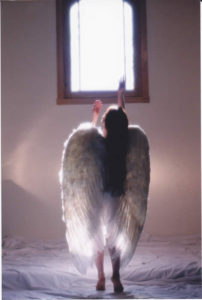 We will use three major marketing strategies:
We will use three major marketing strategies:
Pre-release of the soundtrack recording. Klaus Heymann of Naxos Records, who already published Mr. Mohr’s enormously successful Classical Music Start-Up Kit, released Shadow as part of an American Classics series he has recently launched on Naxos (8.559089-90). This adds enormously to the prestige of the music, as it will be placed alongside the music of Samuel Barber, Walter Piston and other recognized American classics.
Composer Chris Mohr has hundreds of contacts in the record and classical radio business, thanks to his eight years’ experience as editor of On The Air Magazine. Many of these people have already opened their doors and offered their support of the recording when it is released. This includes dozens of music and program directors of classical and public radio stations nationwide, music critics, editors of classical music magazines, hosts of syndicated classical programs, music critics, radio announcers and others. There is even a possibility of mailing out a promotional brochure to all 18,000 former subscribers to On The Air Magazine, most of whom will recognize Mr. Mohr’s name.
We have also conducted five informal “focus groups” to see who is most likely to respond to this work. Musicians and composers are fascinated by the variety of musical styles and the range of instrumental sound; opera lovers are stunned by the stratospheric singing. But by far the strongest response seems to come from victims of rape, incest or violence, as well as therapists and others who offer help to those who have been traumatized in some way. They have reported being overwhelmed by the intensity of the first act; the second and third acts have been described by many of these people as “deeply healing.”
To reach beyond the music-loving group, we hope to aggressively market this to world music and New Age music listeners as well as our core base of classical music lovers. We also plan to set up a web site where people can hear excerpts of the music and even join in on a “chat room” to share their thoughts and feelings about how Shadow has affected them.
One purpose of the aggressive pre-marketing of the CD is to generate pre-film release publicity and create anticipation of the film’s release among the movie art house audiences internationally.
Film Festivals. We intend to enter the film marketplace via film festivals, which large distributors now routinely attend to identify potentially profitable films. We anticipate a favorable reaction to the film from judges as well as potential purchasers. Initial viewing of the film at a festival will place it in an environment where competition for good movies is stiff, where potential judges have an understanding of the art and craft of filmmaking, and where success can create anticipation among potential audiences. Minimally, we plan to attend the New York, San Francisco, Chicago, Denver, Telluride, Toronto, Sundance, Venice, Berlin and Cannes Film Festivals.
The importance of this strategy is illustrated by the story of how The Crying Game made its way to the Academy Awards (Variety, 3/13/93). Interestingly, not a single U.S. studio or independent distributor wanted to fund the art house movie of the century when it was in script form. It finally received foreign funding, and was thus virtually unknown when it had its U.S. debut at Telluride, where it generated terrific excitement and stellar reviews. By this time, the moment of opportunity had passed for all U.S. distributors but Miramax, which had acquired distribution rights upon seeing a rough cut of the film. Who knows what deals the producers might have negotiated had they had waited a little longer’
Distribution Agreements. Distribution agreements will be sought for all the major markets identified in the preceding section. Of particular importance in these sections will be fractionalization of rights worldwide, distributor overhead, profitability of the proposed agreement, and proposed advertising budgets. Minimum guarantees will be sought at the time distribution agreements are negotiated to facilitate early payback of investors. We have allotted one year for the marketing of the film and related products so that financial pressures will not force us to enter anything less than the best agreements of which the film is worthy.
In the event that an offer is made to purchase the film outright within twelve months of its completion, we will negotiate the best price possible, with a floor of $5 million. This will guarantee a return of $1.6 million to investors over and above their initial capital investment.
Additionally, we will enter the documentary, The Making of From The Realm Of The Shadow, into various competitions and aggressively market this piece to appropriate television and theatrical markets. Our proposed public relations consultant, Mr. X, will continually advise us on optimum marketing strategies for the film and related products.
If you are interested in offering support for Emmerich Oross’ proposal to stage From The Realm of The Shadow on an opera stage, contact Mr. Oross at epoross@matavnet.hu
Naxos CDs $13.30 for 2 CDs


